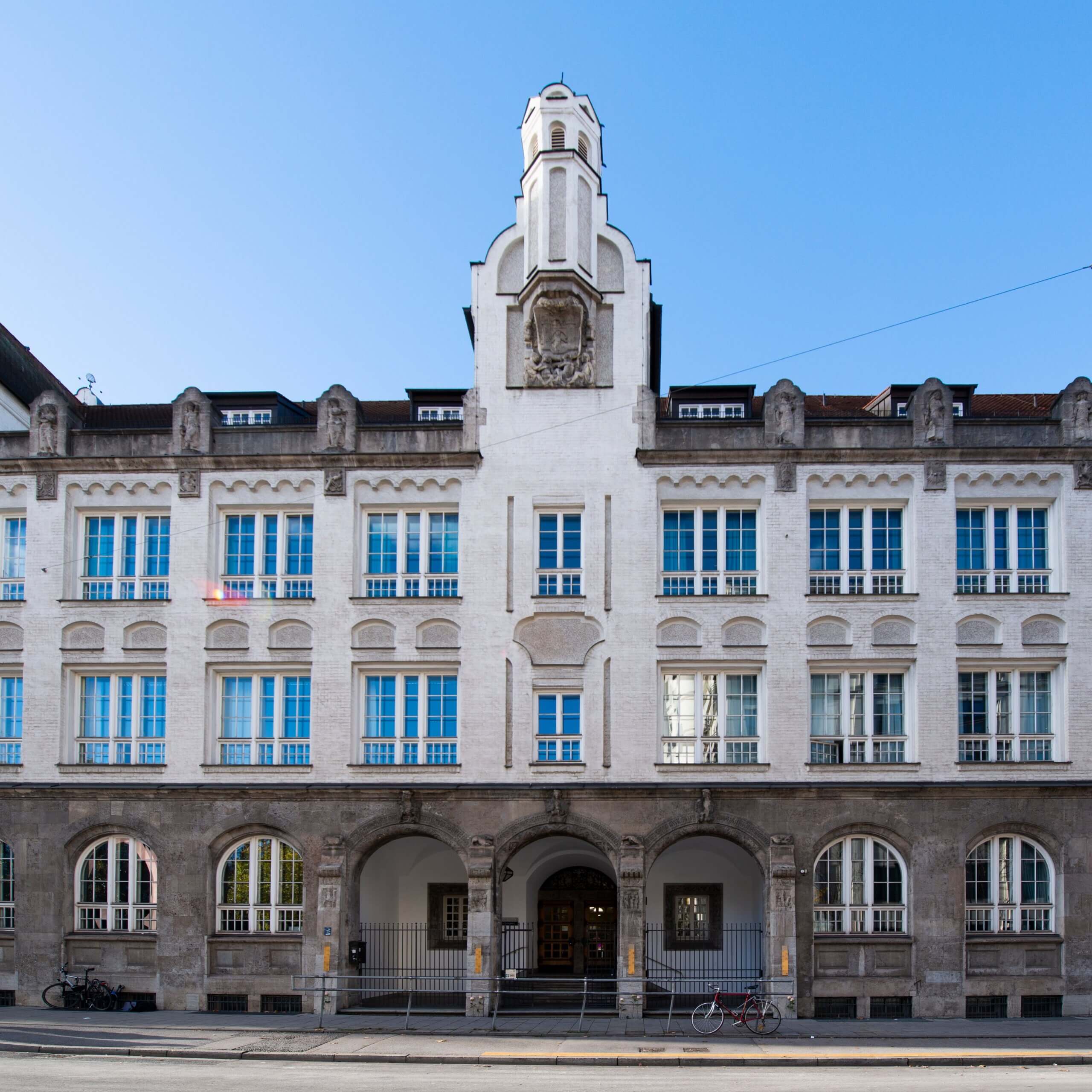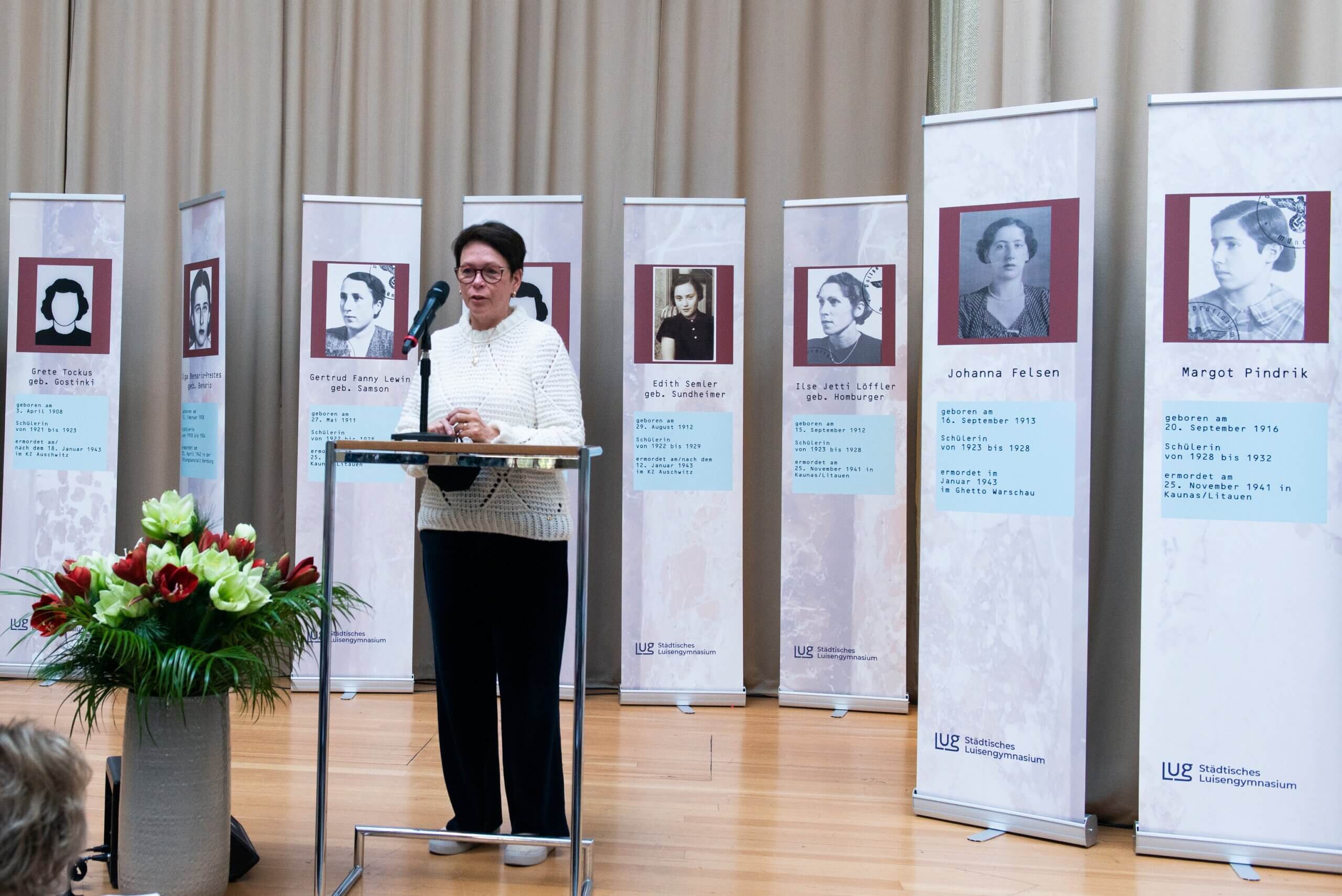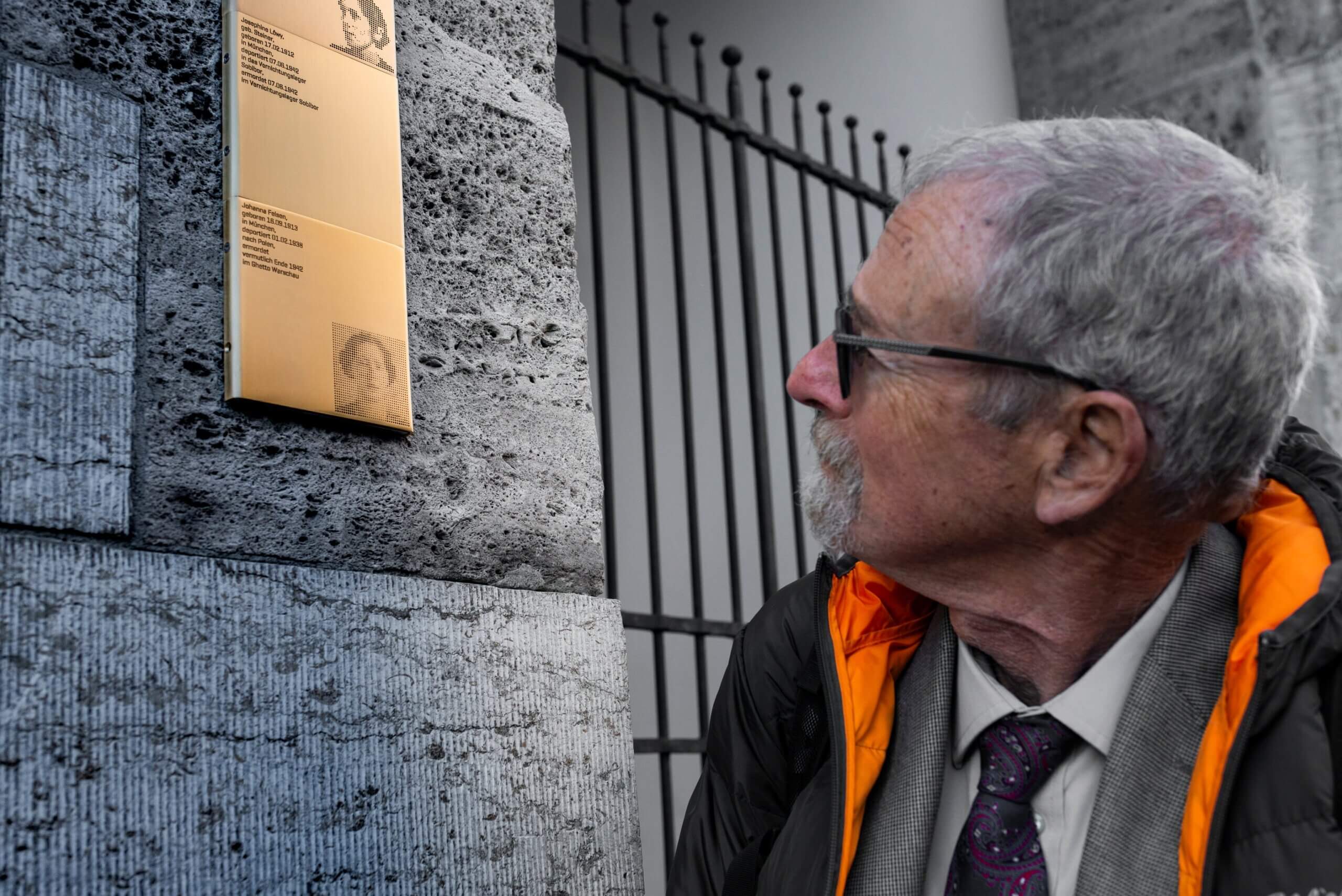My German aunt died in the Holocaust. A Munich high school made sure she was never forgotten
Nearly 80 years after her death in the Warsaw Ghetto, my extended family returned to Germany to honor Johanna’s memory

Graphic by Angelie Zaslavsky
On a chilly November day in Munich, my three sons and I examined the hefty criminal file on my deceased aunt Johanna that the city had maintained.
My family’s presence in Germany was thanks to the efforts of Barbara Hutzelmann, the cultural historian of the city of Munich, who was now browsing Johanna’s file with us as our guide and translator. Barely a month prior, Hutzelmann had found me through an internet search, and emailed me to share that her city would be hosting a ceremony honoring 20 Jewish young women, all students who had attended the previously all-girls Luisengymnasium, a 200-year old public high school. All 20 of these students had been murdered by the Nazis. One of those young women was my aunt — my father’s older sister Johanna.
Each of the murdered students would have a metal plaque installed at the entrance to the school, with their name, date and place of birth and death, and an etched photo. Johanna was the only woman slated to be recognized for whom a family member could be found, and would attend. Hutzelmann asked if I would speak at the ceremony, representing not only my family, but, in essence, the families of all of the young women. I was deeply touched, and let her know that I would be honored to take this on.

Johanna’s crime was having a relationship with a non-Jewish Aryan man, in violation of the 1935 Nuremberg Race Laws. My grandparents’ home had been raided, and evidence of the relationship, including affectionate postcards, had been seized. Despite her protests, Johanna was deported to Poland. One of my sons noticed in her mugshot that there were tears in her eyes. I looked carefully at the photo — he was right.
Staring at her photograph, I could feel in my chest her humiliation, her anger, her disgust and her fear. I had known since I was young that her deportation was ultimately a death sentence. My father had searched for her after the war, and was told by the International Red Cross that she had perished, very likely in the Warsaw Ghetto in late 1942 or early 1943. But in that photo, it felt as if she was very much there, looking out at us, the family she never knew.
When I first received the invitation, I immediately wrote to my three adult sons and asked if any of them wanted to come. In rapid succession, they all said yes, and within minutes it was clear their partners and kids would come too. So, in late November, 13 of us departed from four different cities and headed to Munich. I was deeply touched, and grateful, that Johanna would have so many members of her family there to witness this commemoration of her life, and also saddened that none of the other 19 murdered Jewish women would have relatives there.
I have been to Germany a number of times over the past several decades. My father and mother were born there, and were teenagers when they escaped Nazi persecution. My father especially would speak about how he was proud to be a German Jew before Hitler came to power. But both his family and my mother’s were deeply traumatized by living under Hitler’s regime, and by the losses their families suffered. This visit would be a small window on how today’s Germany is facing that horrifying, shameful past. Our family, including children, grandchildren and great-grandchildren of the Holocaust, had not been spared its impact. This would be an opportunity for family learning and, hopefully, for healing too.

The Luisengymnasium memorial event took place on Nov. 23, a cold but clear fall day. The ceremony itself had been conceived with great care and thoughtfulness. Members of the high school staff and its student body, hand in hand with city of Munich officials, had spent years researching the lives of the 20 girls in preparation for the occasion.
Our family was greeted graciously by the school staff and shown to our reserved seats at the front of the columned, two-story auditorium. When we worried two of our grandchildren, ages 3 and 6, might get restless, the school principal brought over three of the more senior students and offered their child-sitting services, which we gratefully accepted. Each member of my family was given a folder with English translations of all the speeches, so that we could follow along.
I spoke about the significance of this kind of remembering, but also about the work still to be done to fight the persistent scourge of racism, antisemitism and “othering,” in Germany, in the U.S., and in too many “developed” countries. I also knew that I would choke up during my speech, and, to the surprise of no one in my family, my prediction was accurate.

The ceremony concluded with several students reading short biographies of the 20 murdered young women who had walked the same school corridors decades ago: a teacher, a lawyer, the director of a marionette theater, a pianist, a pharmacy intern, a lawyer who was companion to a Brazilian revolutionary and a clerk/stenographer (my aunt). We all then assembled at the front of the school, for the installation of the last four of the 20 memorial plaques. With a heavy but grateful heart, I helped to install Johanna’s.
Much has been said about Germany’s efforts, particularly in the past few decades, to come to terms with the unspeakable horrors committed during the Nazi regime. Monuments, museums, Stolpersteine (stumbling stones), and plaques like those for the 20 students, affixed to the columns at the entrance to Luisengymnasium, recognize and honor the millions murdered by Hitler and his Nazi executioners. Young people are taught not to look away from this heinous legacy, but to stare at it and absorb its significance. Germany has taken this reckoning seriously, despite extremist threats that persist to this day.
My family was deeply touched by the care and respect shown by the school, and the city, to the memory of each of the 20 murdered young women. Through the students’ narrations, and with photos of their faces looking out on the audience, each of them was made real. None were forgotten. And now the 20, aunt Johanna included, face busy Luisenstrasse, declaring “We were here.”
At the end of the ceremony, a young man, one of the students who’d been in the audience, approached me. He had tears in his eyes. He thanked me, and I thanked him for being there. We shook hands, and wept together.
To contact the author, email [email protected].






















